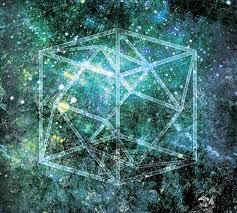Overview
There are infinitely many regular polygons. However, there are a fixed number of regular polyhedra, called Platonic solids. Mathematicians use the definitions of the regular polygons and the characteristics of solid objects to arrive at their conclusions.
Characteristics of Regular Polyhedra
Regular polygons, such as equilateral triangles, squares, equilateral pentagons, hexagons, heptagons, octagons, and so on, have all sides and angles equal. There are an infinite number of them in two-dimensional space. In three-dimensional space, solids with regular polygon faces are called regular polyhedra.
Triangular Faces
In order for a solid to have regular triangular faces, the vertices of the triangles must meet at a point to make a corner. If three triangles meet at each vertex, there are 4 faces, called a tetrahedron. If four triangles meet at each vertex, there are 8 faces, called an octahedron. If five triangles meet at each vertex, there are 20 faces, called an icosahedron. No more triangles can form a corner at a vertex.
Square and Pentagonal Faces
There is only one regular solid made of squares, the cube. Only 3 squares can meet at each point to form a cube. A cube has 6 faces, a top, bottom, and 4 sides. A pentagon has five sides. A regular pentagon has angles that have the same measurement, with sides that are the same length. If three pentagons meet at each vertex, there are 12 faces, called a dodecahedron.
Other Polygons and Other Dimensions
Mathematicians since Plato have shown that there are only those five regular polyhedra in classical three-dimensional space. In higher dimensions than 3, analogues to the polyhedra are called polytopes. Their faces also meet at vertices, and they are symmetrical along various axes. In the 19th century, a mathematician found that there were 6 regular polytopes in four dimensions. One of those figures is a four-dimensional cube, or a cube of a cube, called a tesseract, familiar to readers everywhere. (The cube of a cube of a cube is a penteract.) In dimensions higher than 4, there are only 3 regular polytopes, that correspond to the tetrahedron, cube, and octahedron. The n-dimensional tetrahedron is called a simplex. The n-dimensional cube is also called a hypercube, familiar in science fiction. The n-dimensional octahedron is called a cross-polytope with multiple cells.
Interested in trigonometry tutoring services? Learn more about how we are assisting thousands of students each academic year.
SchoolTutoring Academy is the premier educational services company for K-12 and college students. We offer tutoring programs for students in K-12, AP classes, and college. To learn more about how we help parents and students in Ithaca, NY: visit: Tutoring in Ithaca, NY




